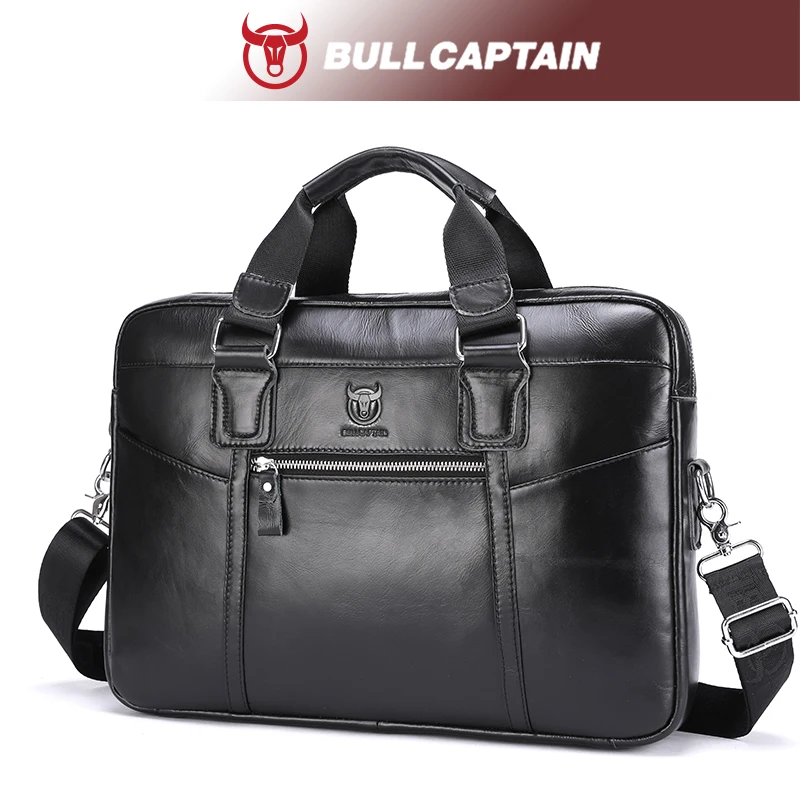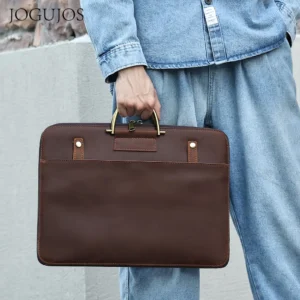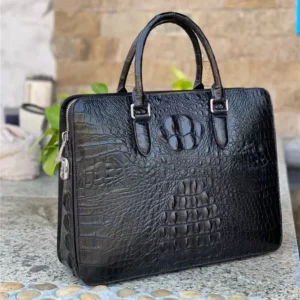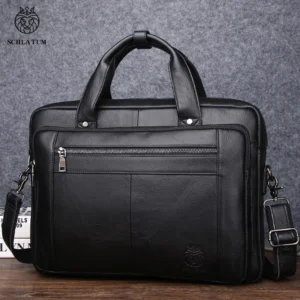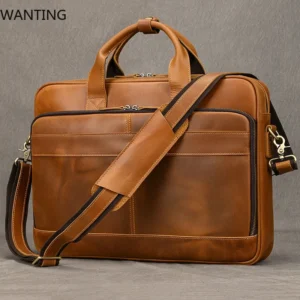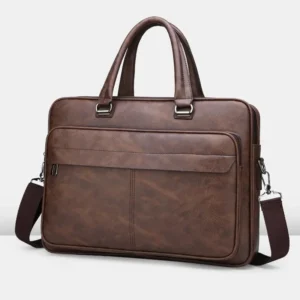The Impact of Briefcase Organization on Professional Success
Picture this: You’re in a client meeting, confidently discussing a proposal when they ask for a specific document. In one scenario, you smoothly open your briefcase and retrieve the exact paper needed without breaking eye contact. In another, you frantically dig through crumpled papers, muttering apologies as documents spill onto the floor. Which professional would you rather be?
An organized briefcase isn’t just about neatness—it’s a powerful tool for professional success. When your documents are properly arranged, you gain immediate improvements in productivity and efficiency. The average professional wastes 4-5 minutes searching for misplaced documents each time they need them, potentially adding up to hours of lost productivity every month.
Your briefcase serves as an extension of your professional image. Much like a well-tailored suit or a firm handshake, the way you manage your mobile workspace speaks volumes about your attention to detail and organizational skills. Clients and colleagues notice these subtle cues that signal your competence and reliability.
Proper organizing documents in leather bags creates a foundation for stress-free presentations and meetings. When you know exactly where everything is, you can focus on the substance of your work rather than scrambling to find materials. The thoughtful arrangement of leather briefcase document compartments transforms your portable office from a source of anxiety into a powerful professional asset.
Preparation: Auditing Your Current Briefcase Situation
Before implementing a new organization system, you need to start with a clean slate. Follow these steps to audit your current briefcase situation:
Complete emptying: Remove everything from your briefcase, including items from small pockets and compartments that often become collection points for forgotten items.
Document assessment: Sort all papers into three simple categories:
– Keep (documents currently needed)
– File (important but not immediately necessary)
– Discard (outdated or unnecessary papers)Inventory non-paper items: Assess which accessories are truly necessary. Common unnecessary items include multiple pens of the same color, old business cards you’ve collected but never followed up on, and random receipts from months ago.
Briefcase evaluation: Take time to understand your briefcase’s features. Identify:
– Main document compartments
– Laptop/tablet sections
– Smaller organizational pockets
– Any built-in file organizersClean interior: Wipe down the inside of your briefcase to remove dust, eraser shavings, and paper clips that often accumulate.
This preparation phase is crucial for implementing effective systems that will keep your organized leather briefcases for work functioning optimally. With a proper understanding of your available space, you can make informed decisions about which leather document bag features will best serve your organizational needs.
Document Categorization Strategies for Maximum Efficiency
The foundation of an organized briefcase is a thoughtful categorization system that aligns with your specific work needs. Consider these proven strategies:
Action-Based Organization
Sort documents based on required actions:
– Urgent: Items requiring immediate attention (today’s meeting materials, signatures needed today)
– Pending: Documents awaiting response or requiring action soon
– Complete: Finished items that need filing at the office
– To-file: Reference materials you’ll need to access regularly
This system works exceptionally well for managers and executives who handle diverse documents requiring different actions throughout the day.
Client or Project-Based Organization
Group documents by client or project, regardless of document type. This approach is ideal for:
– Consultants managing multiple clients
– Legal professionals handling various cases
– Project managers overseeing multiple initiatives
Each client or project gets its own folder or section, eliminating the need to search through multiple categories when preparing for client meetings.
Document Type Categorization
Organize by document format:
– Contracts and legal documents
– Presentations and handouts
– Notes and correspondence
– Reports and analytics
This method benefits professionals who regularly work with standardized document types and need quick access to specific formats regardless of client or project.
Chronological Ordering
Arrange documents by time relevance:
– Today’s meeting materials at the front
– This week’s priorities in the middle
– Reference materials at the back
Perfect for professionals with schedule-driven workdays like sales representatives or education professionals.
Many professionals find that combining these approaches creates the most effective system. Implementing efficient file management in bags often requires a hybrid approach tailored to your specific workflow needs.
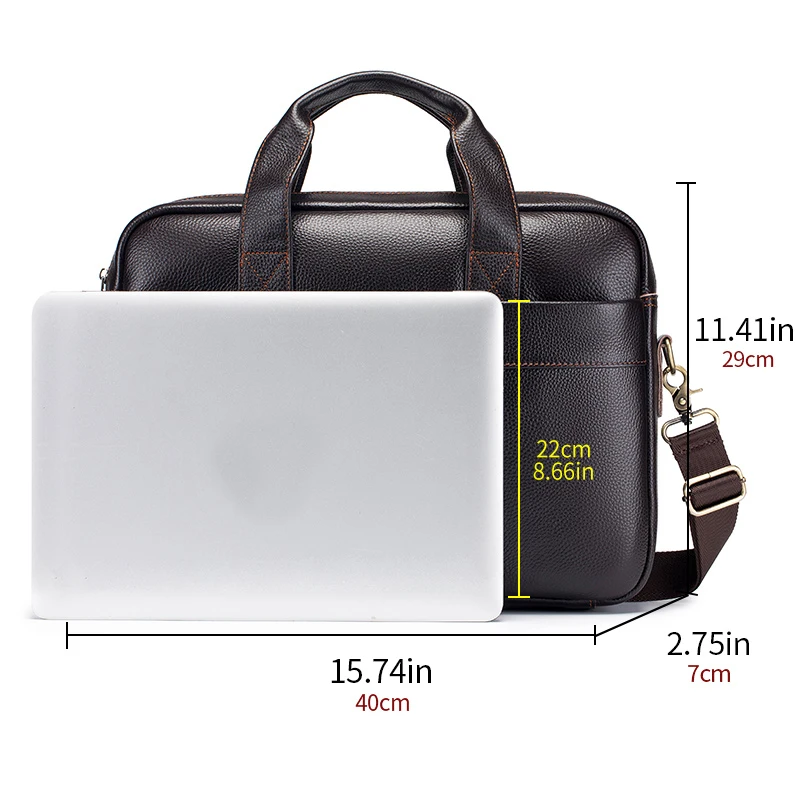
Essential Tools for Briefcase Document Management
The right organizational tools transform a chaotic briefcase into an efficient mobile office. Here are the essential items that professional organizers recommend:
Slim Folder Options
- Manila folders: Lightweight but less durable
- Poly folders: Water-resistant, tear-proof, and available in various colors for color-coding
- Look for: Ultra-thin designs specifically made for briefcase use
Accordion Files and Expanding Folders
- Perfect for categorizing multiple document types in a compact space
- Key features: 5-13 pockets, sturdy dividers, secure closure
- Best for: Professionals managing multiple projects simultaneously
Document Sleeves and Sheet Protectors
- Essential for protecting important single documents
- Benefits: Prevent creasing, tearing, and coffee spills
- Considerations: Choose non-glare options for better readability
Padfolios and Clipfolios
- Combine note-taking capability with document storage
- Features to seek: Built-in pockets, secure document clips, business card storage
- Ideal for: Active meetings where you’ll need to both reference and create documents
Digital Complements
- Portable scanners for converting physical documents to digital
- Cloud storage apps for accessing documents without carrying physical copies
- Note-taking apps that sync across devices
The effectiveness of these tools depends on how well they match your specific needs. Proper document storage tips for leather bags suggest selecting accessories that work with, not against, your briefcase’s inherent design. When choosing a classic laptop briefcase, look for models with built-in organization features that complement these tools.
Strategic Document Placement for Optimal Access
How you arrange documents within your briefcase is just as important as the organizational tools you use. Follow these placement principles for maximum efficiency:
Match Compartments to Document Priority
- Front pockets: Documents needed immediately upon arrival
- Main compartment: Current day’s working papers
- Back section: Reference materials and less frequently accessed items
Frequency-Based Positioning
- Most frequently accessed items should be positioned for quick retrieval without removing other items
- Place documents you’ll need in sequence (morning meeting, afternoon presentation) in the order you’ll need them
Vertical vs. Horizontal Storage
- Vertical storage: Better for quick scanning of multiple documents, like file folders in a cabinet
- Horizontal storage: Preferable for documents that shouldn’t be bent or folded
- Consider using vertical dividers for folders and horizontal sleeves for presentations
Protection Principles
- Place rigid items (tablets, hard folders) toward the back or sides
- Position delicate documents in protective sleeves in the center
- Keep liquids and potential leak hazards in separate sealed compartments
Space Management
- Leave 15-20% empty space to prevent overstuffing
- Maintain enough flexibility to add urgent documents received during the day
- Distribute weight evenly to prevent strain on one side of the briefcase
The right slim leather briefcases provide optimal compartmentalization without unnecessary bulk, making document placement strategies easier to implement and maintain.
Daily and Weekly Maintenance Routines
Maintaining an organized briefcase requires consistent attention through simple routines:
Daily 5-Minute Reset (End of Day)
- Remove all used coffee cups, wrappers, or trash
- Transfer completed documents to their proper destination
- File received business cards with contact information
- Place tomorrow’s essential documents in the quick-access area
- Check that all pens have caps and are secured in their proper place
Weekly 15-20 Minute Organization (Friday Afternoon)
- Remove and process all accumulated papers
- Evaluate which documents need to return with you next week
- Archive completed project materials
- Clean briefcase interior with appropriate wipes
- Restock supplies (pens, business cards, notepads)
Document Rotation Principles
- No document should remain in your briefcase if it hasn’t been used in two weeks
- Exception: Emergency documents like insurance information or key reference materials
- Create a “sweep date” on your calendar to review all contents monthly
Warning Signs Your System Needs Adjustment
- You’ve started avoiding putting things back in their place
- Documents are getting creased or damaged
- You’re consistently having trouble finding what you need quickly
- Your briefcase has become noticeably heavier
Proper leather briefcase maintenance extends beyond just caring for the leather—it includes maintaining the organizational systems within it. A well-maintained briefcase organization system actually becomes easier to maintain over time as the habits become ingrained.
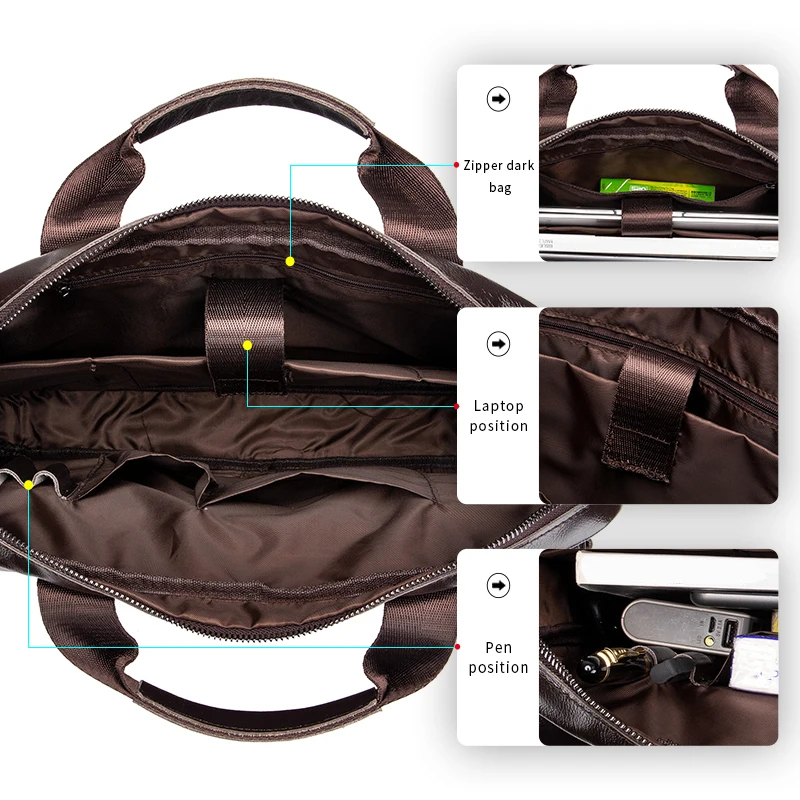
Specialized Solutions for Challenging Document Types
Some document types present unique organizational challenges. Here are tailored solutions for the most problematic paperwork:
Business Card Management
- Problem: Loose cards get damaged and disorganized
- Solution: Dedicated business card folder with alphabetical dividers or scannable with your phone app for immediate digital storage
Receipt Organization
- Problem: Small papers easily lost or crumpled
- Solution: Small envelope or poly zip pouch dedicated to receipts, sorted weekly for expense reports
Meeting Materials Coordination
- Problem: Multiple handouts, agendas, and notes for a single meeting become separated
- Solution: Use paper clips or binder clips to keep all materials for one meeting together, with a clear header page
Oversized Document Handling
- Problem: Large documents don’t fit standard folders
- Solution: Learn proper folding techniques (in thirds, horizontally) and use reinforced creases to prevent tearing
Frequently Used Reference Materials
- Problem: Constant retrieval causes wear and tear
- Solution: Create durable, laminated versions of essential reference materials or use sheet protectors for documents you reference daily
The selection of mens classic leather briefcases should account for these specialized needs, with features that accommodate various document types and sizes while maintaining professional appearance.
Men's Classic Leather Briefcase, Slim Leather Laptop Briefcase, Slim Leather Portfolio Briefcase
$93.67 Select options This product has multiple variants. The options may be chosen on the product pageClassic Laptop Briefcase, Men's Classic Leather Briefcase, Slim Leather Attache Case
Price range: $353.50 through $360.81 Select options This product has multiple variants. The options may be chosen on the product pageBlack Leather Briefcase, Leather Document Bag, Men's Classic Leather Briefcase
Genuine Crocodile Leather Executive Briefcase with Password Lock – Premium Business Document Carrier$1,201.87 Select options This product has multiple variants. The options may be chosen on the product pageBlack Leather Briefcase, Classic Laptop Briefcase, Men's Classic Leather Briefcase, Slim Leather Laptop Briefcase
$228.72 Select options This product has multiple variants. The options may be chosen on the product pageBrown Leather Briefcase, Classic Laptop Briefcase, Crazy Horse Leather Satchel, Men's Classic Leather Briefcase
Price range: $172.15 through $200.02 Select options This product has multiple variants. The options may be chosen on the product pageMen's Slim Leather Briefcase, Slim Leather Laptop Briefcase, Vegan Leather Briefcase
Price range: $120.82 through $131.11 Select options This product has multiple variants. The options may be chosen on the product page
Preventing Common Briefcase Organization Failures
Even well-designed organization systems can break down over time. Here’s how to prevent the most common failures:
Warning Signs of System Breakdown
- Papers migrating outside their designated areas
- Increasing time spent searching for documents
- Growing reluctance to put things away properly
- Visible wear on folders before documents inside are outdated
Overstuffing Prevention
- Implement a strict “one in, one out” policy for documents
- If your briefcase won’t close easily, it’s too full
- Schedule weekly purges to keep volume manageable
- Consider using thinner folders or digitizing older documents
Document Integrity Maintenance
- Use reinforced folders for frequently accessed documents
- Place protective covers on corners of important papers
- Store writing instruments separately from important documents
- Keep a small stain removal pen for quick cleanup of marks
Incoming Paper Flow Management
- Process new documents immediately upon receipt
- Decide on the spot whether to file, act on, or discard
- Have a designated “inbox” area in your briefcase
- Never stuff papers in randomly to “deal with later”
Professionals who regularly carry extensive paperwork find that briefcases designed for file management help maintain organizational systems through their thoughtful compartmentalization and sturdy construction.
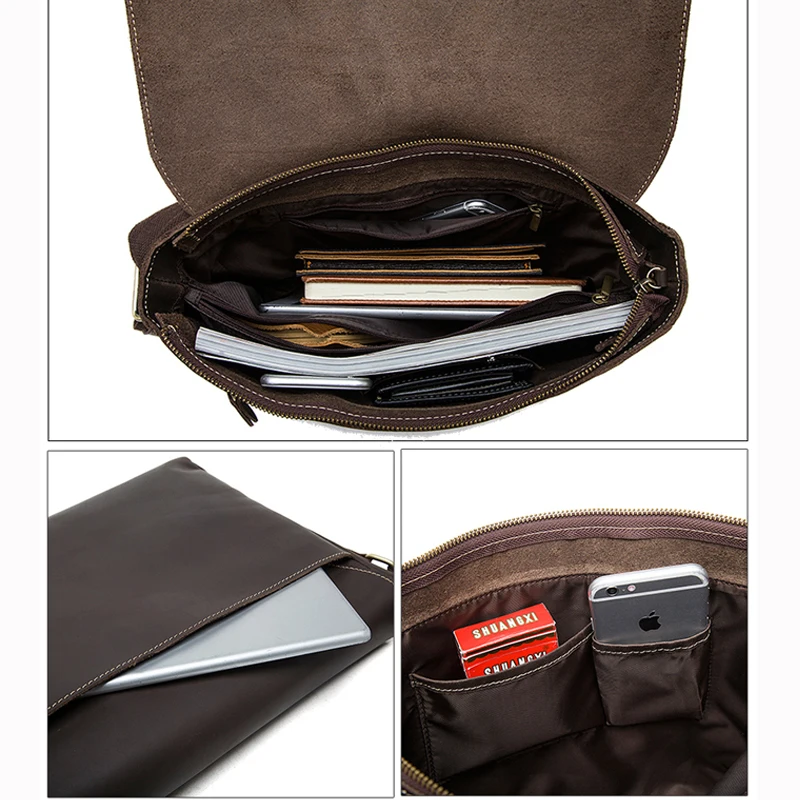
Should You Go Paperless? Balancing Digital and Physical Documents
The question of whether to go fully digital remains relevant for every professional. Here’s how to strike the right balance:
When to keep physical copies:
– Legal documents requiring original signatures
– Handwritten notes from important meetings
– Presentation materials you’ll distribute
– Documents you’ll need in settings without reliable technology access
When digital makes more sense:
– Reference materials you rarely need to access
– Archival information
– Documents that need frequent editing or updating
– Information that needs to be searchable
Most successful professionals adopt a hybrid approach, using digital tools to reduce paper load while maintaining physical copies of essential documents. Cloud storage services, tablet note-taking apps, and smartphone scanning applications can complement your physical organization system without replacing it entirely.
The key is determining which documents truly need to be physically present and which can be accessed digitally when needed. The strategic benefits of large capacity briefcases include the ability to carry both digital devices and essential physical documents in an organized manner.
How Does Your Briefcase Organization Reflect Your Professional Brand?
Your briefcase organization is a subtle but powerful element of your professional brand. Consider:
How do clients perceive you when you smoothly retrieve exactly what’s needed without hesitation? What impression does it make when you can immediately provide a requested document rather than saying, “I’ll email it to you later”?
The way you organize your mobile office demonstrates your attention to detail, preparedness, and respect for others’ time. A professional who can immediately access needed information communicates competence without saying a word.
Ask yourself: Does your briefcase organization align with the professional image you want to project? Is your system supporting or undermining your career goals? The answers may prompt you to implement the strategies outlined in this guide.
At Poise Porter, we believe your briefcase should be both a functional tool and a reflection of your professional standards. The organization within speaks volumes about the professional carrying it.

